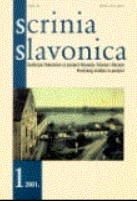BORBA PROTIV „BACILA“: SUZBIJANJE BOLJŠEVIČKIH IDEJA NA PODRUČJU SLAVONIJE IZMEĐU DVAJU SVJETSKIH RATOVA (1918.-1939.)
THE STRUGGLE AGAINST “BACILLI”: THE RESTRAINT OF BOLSHEVIK IDEAS IN THE TERRITORY OF SLAVONIA BETWEEN THE TWO WORLD WARS (1918-1939)
Author(s): Ana RajkovicContributor(s): Mica Orban Kljajić (Translator)
Subject(s): Political history, Labor relations, Government/Political systems, Political behavior, Pre-WW I & WW I (1900 -1919), Interwar Period (1920 - 1939), History of Communism, Migration Studies
Published by: Hrvatski institut za povijest
Keywords: Kingdom of Serbs; Croats and Slovenes; Kingdom of Yugoslavia; repressive apparatus; adherents of the October Revolution; quarantines; discourse models;
Summary/Abstract: One of the basic characteristics of the repressive government of Yugoslavia between the two World Wars certainly was also the inhibition of the spreading of communist, i.e. Bolshevik ideas in the labour movement after World War I, which was to a great extent ascribable to the return of Russian prisoners, that is to say soldiers of the Austro-Hungarian Monarchy who had during their imprisonment accepted the idea of Bolshevism and accordingly tried to transfer it to the territory of the newly established Kingdom. These “adherents of the October Revolution”, as they were later named in historiography, returned to the Slavonian area, primarily to the towns Osijek and Vukovar. The objective of this paper in this context is to analyse on the basis of archival materials and then newspapers how the government imposed the restraint, the Slavonian area being viewed in a broader social-political context in order to provide a more complete analysis of the activities of the repressive system but also of how ideas were transferred in this area. The creation of an anti-Bolshevik policy has been interpreted in the scope of the comparative method and the theoretical model of the Dutch theorist T. A. van Dijk.
Journal: Scrinia Slavonica
- Issue Year: 2021
- Issue No: 21
- Page Range: 355-387
- Page Count: 33
- Language: Croatian

